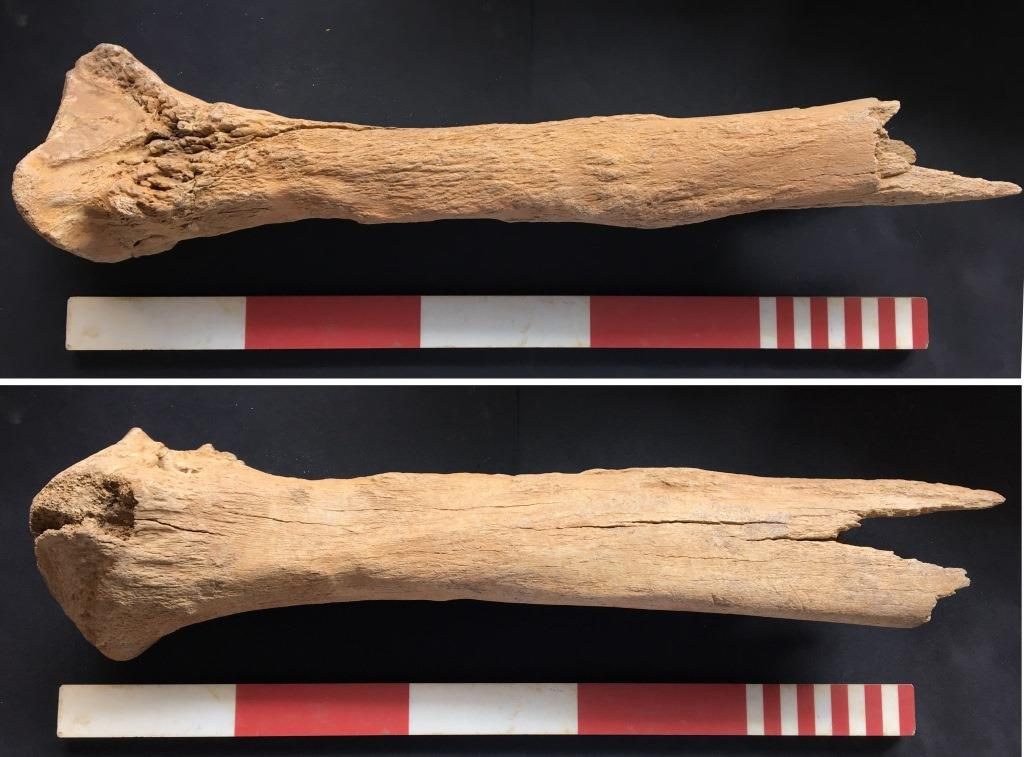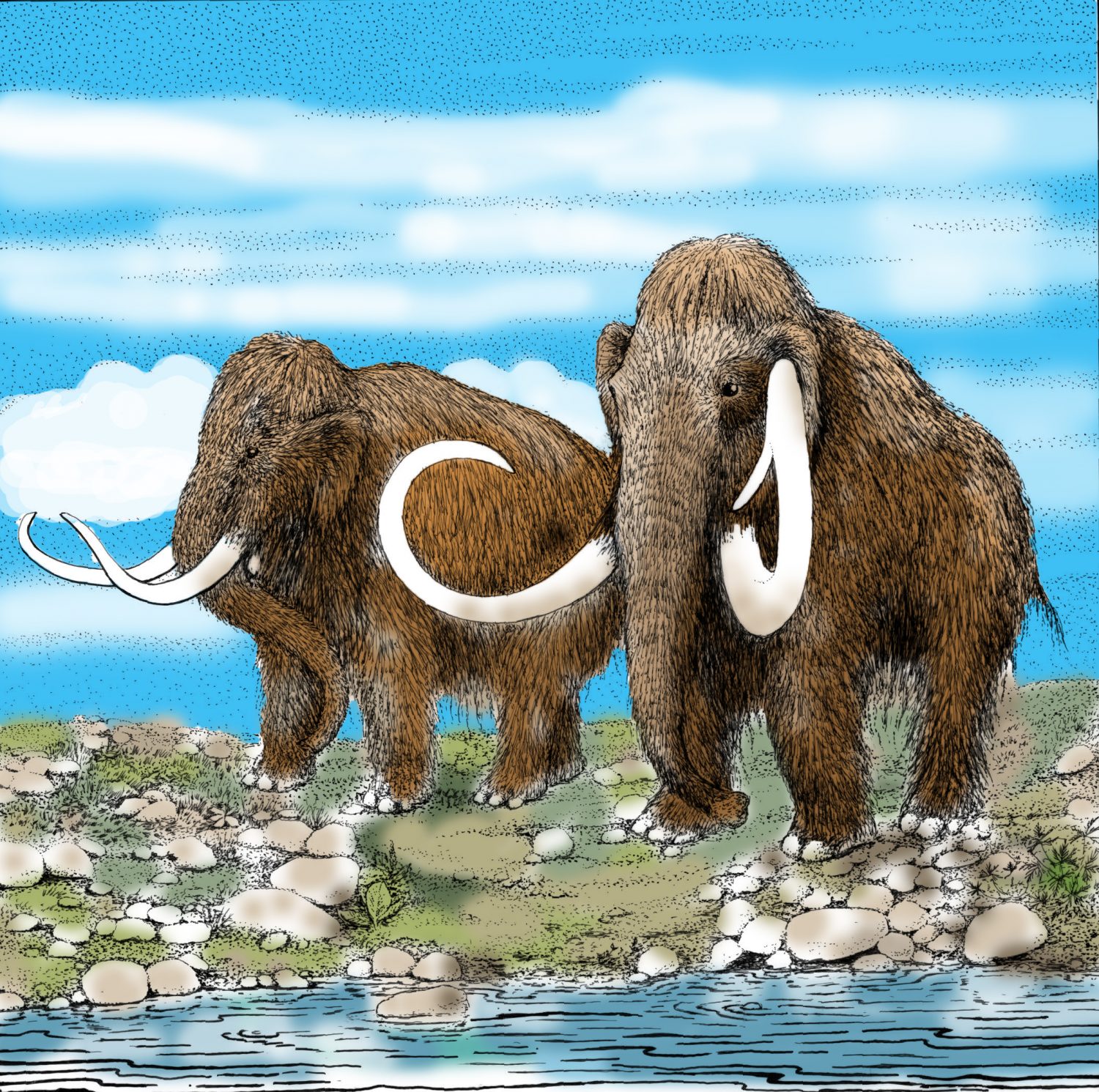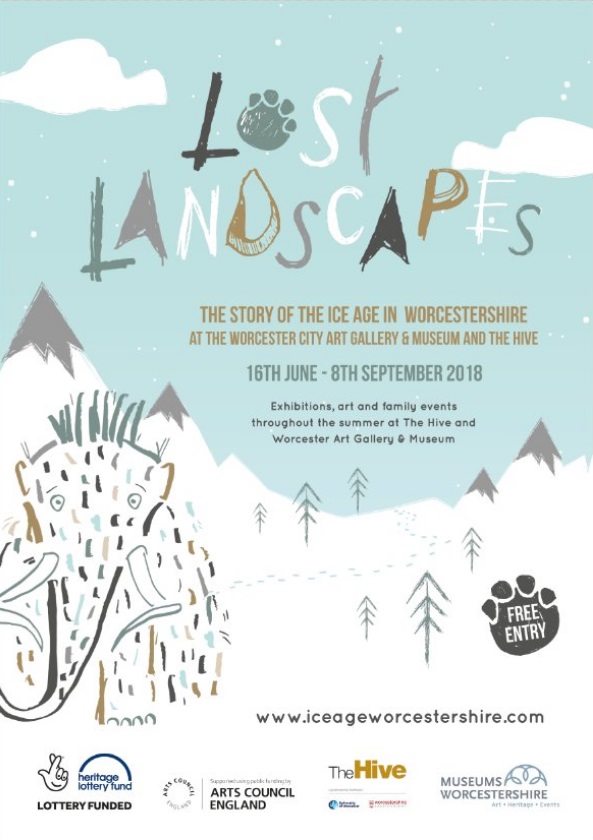Find of the Month – May
- 5th June 2018
Mammoths in Staffordshire? Yes! A mammoth bone was recently discovered along the River Tame in Staffordshire. Megafauna remains are incredibly important for understanding deep history and past landscapes, but they’re more common in the West Midlands than you’d think.
Most archaeology occurs within the first metre or so below ground, except for traces of Ice Age and older remains. These tend to be deeply buried: much of it is found in thick sand and gravel deposits left by melting glaciers. It’s from these deep geological deposits that the woolly mammoth bone comes.

Proximal (elbow) end of a mammoth radius, found in May 2018 – 50cm scale
Upon first inspection, the bone seems to be the elbow (proximal) end of a woolly mammoth radius, or lower front leg bone (take a look at this 3D model of a mammoth skeleton to see where — it’s the thinner of the two bones below the knee). Large mammals — known as ‘Megafauna’ — were common during the Pleistocene, 2.5 million to 12,000 years ago, and during this time mammoths made it to all continents except Australia and South America. Although they seem built for cold, glacial environments, they could live in temperate climates too.
A female woolly mammoth, nicknamed Millicent, was discovered in 1990 at what is now Strensham Services on the M5. Cold-adverse mollusc species from the deposits she was found in show that her environment was similar to the British climate today. Woolly mammoths lived through the many glacial and interglacial (warmer) periods of the Pleistocene, moving south as the polar ice caps expanded and north as glaciers and ice receded. At the moment, we’re not sure exactly how old this mammoth bone is or the environment it lived in – we’ll hopefully find out more about the deposits it was found in soon.

Mammoths in Worcestershire – reconstruction drawing by WAAS illustrator Carolyn Hunt
Finds like this sit in the grey area between archaeology and palaeontology. But mammoths were a familiar face to our hominin ancestors living in Europe, northern Asia and North America and the subject of much early prehistoric, or Palaeolithic, art. It was only towards the end of the last Ice Age that mammoths began to die out. Incredibly, a small population survived on a tiny Artic island until about 4000 years ago.
Back in 2003, the most complete woolly rhino skeleton ever found in Britain, around 40,000 years old, was also found along the River Tame. This well-studied individual lived in a treeless landscape with average summer temperatures of 8-12°C. It’s possible the mammoth was alive at a similar time to this woolly rhino as both were found within first terrace deposits.
Want to see this recent discovery? You won’t have to wait long! Along with the Clifton tusk, this piece of mammoth will be part of an Ice Age exhibition exploring these lost landscapes, Palaeolithic animals and archaeology of Worcestershire. Opening on June 16th, the exhibition runs until September 8th at The Hive and Worcester City Art Gallery & Museum. For more details, see the Lost Landscapes website: iceageworcestershire.com

Interesting Paul Thanks for sharing.